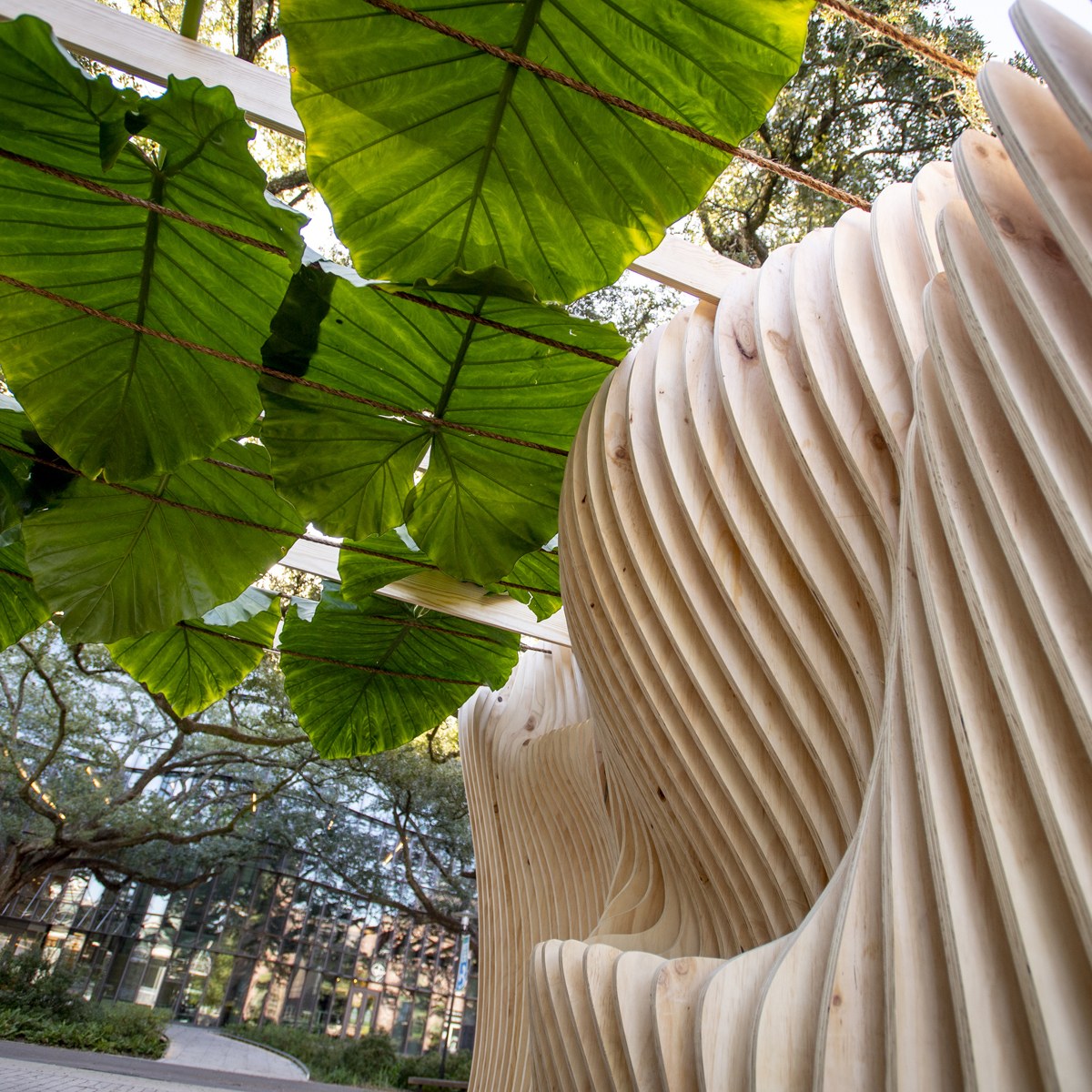TuSA students showcase work with Sukkah 15 design-build

october 4, 2023
Until last year, Eric Chesebrough, a senior in the Tulane University School of Architecture, knew little, if anything, about Sukkot, a week-long Jewish holiday that celebrates the fall harvest.
That’s when he began volunteering with the 14th annual Sukkah Build, a student-driven project in which architecture students use their skills and imagination to design and construct a sukkah, a temporary open-air hut under which those marking the holiday dine, celebrate and, in some cases, even sleep.
The experience was so amazing, he said, that when it came time for the 15th Sukkah Build, he stepped up with classmates Lauren Liroff and Cole Schwabacher to run the show.
“The project is a unifying force within the Tulane community, fostering cultural awareness and mutual respect.” - Lauren Liroff, Tulane architecture student
“One of our biggest goals was to make the project fun,” said Chesebrough, a New Jersey native. “We ended up working a lot at night, well past midnight. It’s such a fantastic opportunity, because we have the freedom to come up with a design with very little design oversight. And that’s just not something that happens in the professional world.”
Funded by Tulane Hillel, their completed sukkah is a whimsical structure that combines cypress wood with hot pink acrylic and bubble cut-outs of varying sizes. One side features cutouts of an etrog (a citrus fruit) and a lulav (a palm branch), symbols that represent the unity and diversity of the Jewish community.
With Sukkot beginning on Sept. 29, students began working on the project before the fall semester even began. They started by coming up with their own digital designs, a kind of mini-competition that drew an array of creations. Once the group settled on a design, they began the process of procuring supplies, visiting lumber yards, recruiting volunteers and developing a timeline for completing the work.
One of the most crucial aspects of designing and building a sukkah is ensuring that it adheres to Jewish law.
“Our sukkah was meticulously constructed in adherence to Halakha (Jewish law) guidelines, ensuring its ‘kosher’ status for Sukkot use,” said Liroff. That means the structure has to have at least three full walls and meet certain dimensions in both length and breadth.
Volunteers spent much of their time in the School of Architecture Fabrication Labs’ wood shop inside the Theater Department at Dixon Hall, where they prefabricated the various wood components of the sukkah. A significant portion of the design and build process also involved using the Fabrication Labs’ equipment for milling, a procedure that utilizes computer software and a machine to carve and cut intricate designs and patterns into wood or other materials.
Just before the start of the holiday, they began the process of assembling the structure in Tulane’s Pocket Park. They completed it just in time for a Saturday evening celebration sponsored by Tulane Hillel. At the conclusion of the holiday, it will be donated to the Jewish Community Day School in Metairie.
Ron Gubitz, executive director of Tulane Hillel, praised the partnership between Hillel and the School of Architecture. “The project has gone through some amazing growth over the years,” he said. “We love working with the students to see what they come up with. It’s a great opportunity for real-world design experiences in a meaningful way for our community during Sukkot.”
Liroff agreed. “The project is a unifying force within the Tulane community, fostering cultural awareness and mutual respect,” she said. “It provides an opportunity for individuals to come together, learn and actively engage in the traditions and significance of Sukkot.”
Schwabacher thanked Tulane Hillel for its support and commended team members for their dedication. “They went above and beyond to make this project happen,” he said. “I look forward to leading Sukkah 16.0 next year.”
This article was originally posted by Tulane News.
RELATED

Sukkah in the age of coronavirus
Every year, for the past 11 years, students in the Tulane School of Architecture have built a sukkah, an open-air hut-like structure under which Jews celebrate Sukkot, a week-long fall harvest festival.